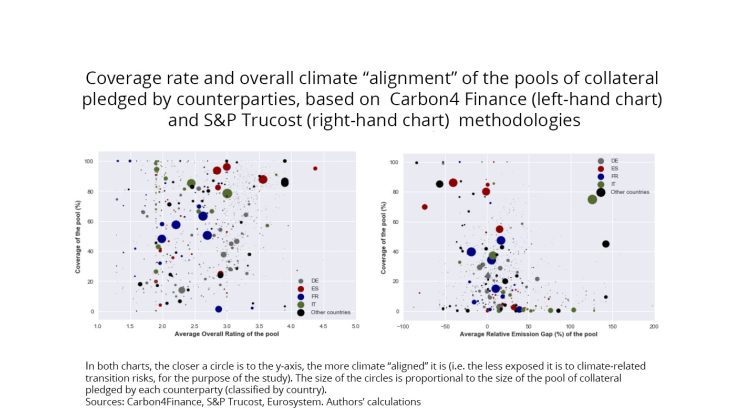Climate-related Risks and Central Banks’ Collateral Policy: a Methodological Experiment
Working Paper Series no. 790. Central banks increasingly acknowledge that climate change is a source of financial risks, which is likely to also impact their conduct of monetary policy. Against this backdrop, the aim of this paper is to explore one potential approach to factoring climate-related transition risks into a central bank’s collateral framework. Given the radical uncertainty associated with measuring such risks, this approach relies on so-called climate “alignment” methodologies, which enable to assess the consistency of eligible and pledged marketable assets with specific climate targets. Moreover, this paper proposes a “climate-hedging portfolio approach”: instead of seeking to “align” the collateral on an asset-by-asset basis, central banks could aim for “alignment”, in aggregate, of the collateral pools pledged by their counterparties with a given climate target. The rationale for this choice is that assessing climate-related risk at the pool level avoids the Eurosystem having to decide on which assets/issuers in the pools should be excluded or capped, and is therefore more compatible with a market neutrality approach. The numerical experiment using Eurosystem marketable criteria data suggests that, in aggregate, neither the Eurosystem eligible collateral universe nor the collateral pledged is “aligned” with the climate targets of the European Union. From this perspective, the Eurosystem marketable collateral can be considered to be exposed to climate-related transition risks. We discuss the potential practical implications of aiming to “align” collateral pools, and suggest avenues for further work.
